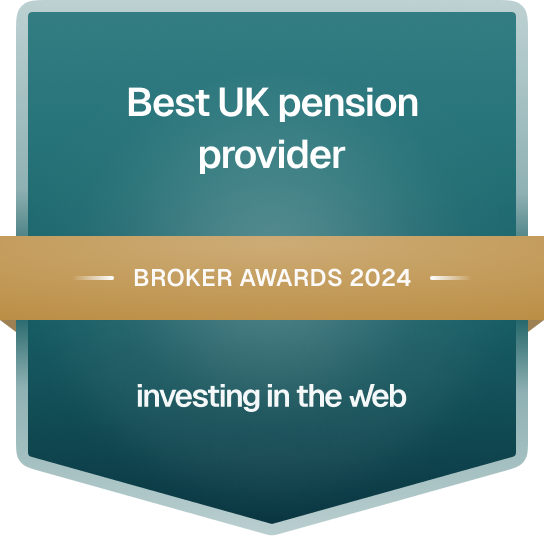
Self-employed pensions
Important information - Investments can go down in value as well as up so you could get back less than you invest. You normally can’t access a pension until age 55 (rising to 57 from 2028). Pension and tax rules can change, and benefits depend on your circumstances. This isn’t personal advice. If you’re not sure what’s right for your situation, you should ask for financial advice.
Do you need a pension if you're self-employed?
Everyone will need some form of income in retirement. Paying into a pension is one way to save for later life. But if you’re self-employed, there’s no-one to choose a pension scheme for you, and no employer to make payments on your behalf. Saving for retirement falls entirely on your shoulders. So, it is important to understand what options are available and what works best for you.
What are the tax benefits of a self-employed pension?
Saving into a pension is one of the most tax efficient ways you can save for retirement. And if you're self-employed or work for yourself, it can also help you cut your tax bill.
The tax benefits of paying into a pension are different based on whether you're a sole trader, part of a partnership, or a business owner. Money in a pension is usually accessible from age 55 (rising to 57 in 2028).
Pension tax relief for the self-employed
If you're a sole trader or part of a partnership, you can make personal contributions to your pension, which will qualify for tax relief. UK residents under age 75 can usually pay in as much as they earn and get 20% from the government in tax relief. If you pay tax at a higher rate you can claim back up to a further 25% through your tax return. Scottish tax rates and bands are different.
The amount that can be paid into pensions without triggering a tax charge is limited by the annual allowance - which is £60,000 for most people, but may be as low as £10,000. You are also limited by your earnings (this will be any profit before tax which you declare to HMRC in the current tax year).
Can I offset tax as a sole trader or partnership?
Any contributions to employees' pensions can be offset against your income tax liabilities.

Pension tax benefits for Limited Company owners
If you’re a limited company owner, you might choose to make employer contributions to your pension from your company account. These contributions can normally be treated as an allowable business expense and offset against the company’s corporation tax bill. You won’t pay employer or employee National Insurance on the contribution. Employer contributions aren’t limited by earnings but are still subject to the annual allowance (£60,000 for most people).
You can also choose to make personal pension contributions to your pension if you're a limited company owner, but it might not be the most tax efficient option. Personal contributions are limited by both the annual allowance and your earnings.
If you're setting up a workplace pension for employees, you can choose to set up a salary sacrifice arrangement, so that you and your employees can save tax and National Insurance by sacrificing part of any salary in exchange for a pension contribution.
Tax is a complex subject, so if you're not sure what's right for you, you should ask for professional advice. Tax benefits depend on individual circumstances and tax rules can change.
Why choose the HL Self-Invested Personal Pension?
- Flexible payments - Monthly direct debits from as little as £25 a month, with the ability to pause or cancel payments if you ever need to.
- Invest where and how you want to - You can pick your own investments, select one of our ready-made portfolios, or pay a financial adviser to choose investments for you.
- Freedom at retirement - With the HL Self-Invested Personal Pension (SIPP), you're free to choose from all the main retirement options, including taking a secure or flexible income.
It’s free to set up your own pension
The HL SIPP is free to set up and low cost to run. Our yearly charge for holding investments is never more than 0.45%. Some investments will have their own annual charges, so please check these first before you invest.
It’s free to buy and sell funds. Other dealing charges depend on the type of investment and how often you trade.
Open an HL SIPP in minutes
Start with a bank payment
Set up monthly payments from as little as £25, or make one-off payments of £100 or more.
You can change your pension contributions whenever you like.
Transfer your old workplace pensions
You might have old pensions dotted around from previous employers which may not always be easy to keep track of.
To make life easier, you could think about combining them into one online account like the HL SIPP.
How self-employed HL clients are saving for retirement
State Pension for the self-employed
If you work for yourself, you’re entitled to the State Pension in a similar way as everyone else. Men born after 5 April 1951, and women born after 5 April 1953, who’ve paid National Insurance (NI) for at least 10 years qualify for the new State Pension that pays a maximum of £230.25 per week, for the current tax year. You will receive the maximum if you have 35 NI qualifying years.
While the State Pension can help cover some of your expenses, it probably won’t cover everything. The full new State Pension is only £11,973 a year. So it’s likely you'll need another source of retirement income if you want more financial security and flexibility in retirement.
Other ways to save for retirement
A pension isn't the only tax efficient way to save for retirement. A Lifetime ISA (LISA) is another option to help you save towards your future. You need to be aged between 18 and 39 to open a LISA.
In some cases, a LISA might be more tax efficient than a pension but this largely depends on your tax position. For example, a LISA might be suitable if you're a sole trader who is a basic rate taxpayer. It doesn't have to be a case of choosing one account over another, but at certain stages of your career one might be more useful. In this factsheet, we compare both options.

FAQs on self-employed pensions
Guides

Boring Money Best Buys 2025

Boring Money Best Buys 2025

Investing in the Web's Global Broker Awards 2024
Help and support
Take a look at our most frequently asked questions for quick answers.
If you need more assistance or have specific questions, please contact us.



